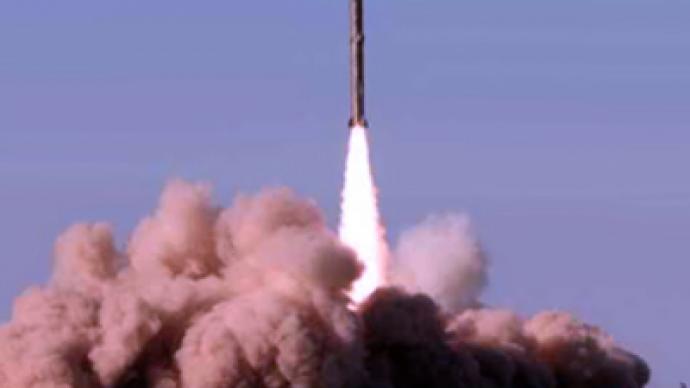Numbers stall nuclear reduction talks

US-Russian talks on a new strategic arms limitation treaty are losing pace. The parties are arguing over the limits of deployed missiles and the way nuclear warheads are to be accounted for.
A new arms reduction treaty that would replace the START agreement was the main issue on the agenda during Barack Obama’s visit to Moscow in July. The plan to further decrease the number of nuclear arms in Russia and the US was confirmed in an agreement signed by the two presidents.
According to Kommersant daily, a draft treaty, to be finalized by diplomats as soon as this month, is to be presented to Obama and Medvedev at G20 summit in Pittsburgh, which begins on September 24. However, there is a disagreement over the exact numbers, which may delay work on the new treaty.
While Washington and Moscow agree on the limit on nuclear warheads – the threshold of 1500-1675 mentioned in the preliminary agreement – the number of delivery vehicles is a point of debate. Russia’s proposition is 500, while the US wants more than twice as many, 1100, which is approximately the number of missiles the Pentagon keeps deployed at the moment.
“The question is whether we’ll be able to find the middle ground. There’s a feeling that the USA is ready to agree on 900 delivery vehicles. But it’s not acceptable for us too. To reach a compromise we need the level of about 700 pieces. But Washington won’t take such a radical reduction,” Kommersant cites as saying Sergey Rogov, director of the Institute of the USA and Canada at the Russian Academy of Sciences.
Arguably a worse issue is how the deployed warheads are accounted for. “Generally speaking, we could skip concrete numbers of warheads and delivery systems and move on now. What’s more important is that we can’t agree on how to count warheads,” told the newspaper a source in the Russian negotiators’ team.
Now the number is calculated according to how many warheads a deployed missile can possibly carry, notwithstanding how many are actually placed in the silo or in a submarine launch tube. The Pentagon wants to turn the tables and count the actual number of deployed warheads. Moscow disagrees; pointing out that, in case of a conflict, missiles can be rearmed with extra warheads from stores, which would tip the balance of power in favor of the US.
Another stumbling block is Russia’s intention to link strategic arms reduction with the American anti-ballistic missile plans. The position was reiterated by Foreign Minister Sergey Lavrov on Tuesday in Moscow, who said the replacement of START should “secure strategic stability based among other things on acceptance of the link between strategic offensive and defensive capabilities.”
While the Obama administration has not pushed forward with the Bush-era plan for a missile shield in Eastern Europe – something that has been a major irritant in US-Russia relations for years – the idea is still on the table.
The negotiators’ ability to overcome all the differences in just three weeks is, however, the big question.
Read also: Nuclear Arms Reduction To Become Another Apple of Discord for Moscow and Washington












